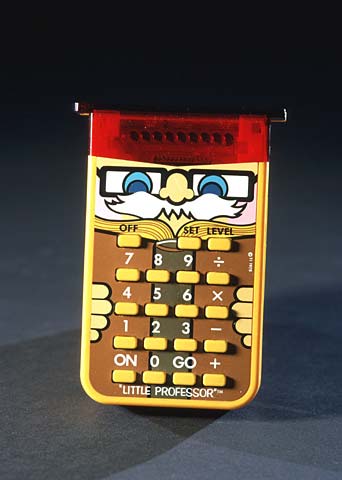The List: Seven “Back to School” Artifacts
As teachers and students head back into the classroom, we present a list of the Smithsonian Institution’s most interesting school-related objects
/https://tf-cmsv2-smithsonianmag-media.s3.amazonaws.com/filer/20110907032003classroom-set-small.jpg)
If you’re a teacher or a student, you’ve probably headed back to school this week and already the reading assignments are piling up and exams loom. To ease your pain, we offer this list of cool school artifacts from the Smithsonian Institution’s extensive American history, art and science collections.
Blackboard Protractor: Starting in the years after the Civil War, the number of high school students nationwide boomed. In order to teach the growing math classes, teachers used instruments such as over-sized protractors and compasses to illustrate concepts up at the blackboard. This protractor model was made by the Dietzgen company of Chicago starting in 1925; it was used at Bliss Electrical School in Takoma Park, Maryland, around the year 1950.
Classroom with Three Figures: Lavern Kelley, of Oneota, New York, was a dairy farmer and prolific wood carver from an early age. Over time, as his subject matter expanded from vehicles and objects to people, he became a well-known folk artist–he had pieces commissioned by places like the Fenimore Art Museum, and whittled while going about his daily chores. This diorama draws on Kelley’s memories as a schoolchild in the 1930s and ’40s.
Disney School Bus Thermos: In the 1950s and ’60s, the marketing of school supplies turned into a full-fledged industry, with manufacturers capitalizing on popular mascots to appeal to children. This steel and glass thermos features Mickey Mouse, Goofy and others getting off the school bus to start the day.
Slide Rule: Before calculators or computers, students used this device, originally invented in the 1600s, to calculate multiplication and division problems. As explained in the online exhibition “Slates, Slide Rules, and Software,” the slide rule gradually spread from scientists and engineers to everyday high schoolers in the early part of the 20th century. This slide rule was used at a girls’ high school in Pittsburgh, Pennsylvania, during the 1960s.
Beatles Lunch Box: As part of “Taking America to Lunch,” exhibition at the American History Museum, an extensive collection of vintage school lunchboxes, from Miss America to Bonanza to Rambo can be found in the museum’s Stars and Stripes Cafe on the museum’s lower level. While television evolved into one of the country’s primary forms of entertainment, the boxes became a way for studios to advertise their shows’ performers. This 1966 Beatles artifact is the first box dedicated to the group; with all four musicians featured on the front and close-ups on the back, it was surely the box of choice for any member of the cool crowd.
Boston School Bus Broken Window: During the civil rights era, in the 1960s and ’70s, public schools became sites for intense confrontation. In 1974, a group of Boston plaintiffs, including the NAACP and parents of African-American students, sued the city’s school board, claiming that segregated neighborhoods led to unequal education opportunities for black and white children. The resulting busing program triggered unrest in many areas, including South Boston, where angry white demonstrators threw glass bottles and rocks, breaking nearly all the bus windows. This window sat in a school bus garage for a decade before being donated to the American History Museum in 1983.
“Little Professor” Handheld Calculator: Desktop calculators emerged in labs and office settings in the 1960s, but the invention of the microprocessor enabled them to be used in classrooms, and as educational toys, in the ’70s and ’80s. While earlier LED calculators were run on NICAD battery packs and required recharging after just hours of use, this “Little Professor,” made by Texas Instruments in the late 1970s, made early use of solar cells to keep the device LCD screen charged conveniently.
/https://tf-cmsv2-smithsonianmag-media.s3.amazonaws.com/accounts/headshot/joseph-stromberg-240.jpg)

/https://tf-cmsv2-smithsonianmag-media.s3.amazonaws.com/accounts/headshot/joseph-stromberg-240.jpg)